Invented by Michael D. Ellis, 3D Radio LLC
One of the key factors driving the growth of the entertainment systems market is the increasing adoption of streaming services. Platforms like Netflix, Amazon Prime Video, and Disney+ have revolutionized the way people consume entertainment content. These services offer a vast library of movies, TV shows, and documentaries that can be accessed anytime, anywhere, and on any device. This convenience factor has attracted millions of subscribers globally, leading to a surge in demand for smart TVs, streaming devices, and high-speed internet connections.
Another significant trend in the entertainment systems market is the rise of virtual reality (VR) and augmented reality (AR) technologies. VR headsets and AR glasses have gained popularity among gamers and entertainment enthusiasts, offering a truly immersive and interactive experience. These technologies have also found applications in various industries, including healthcare, education, and tourism, further expanding their market potential.
Furthermore, the market for home entertainment systems has also witnessed remarkable growth. Home theater systems, soundbars, and gaming consoles have become essential components of modern households. Consumers are increasingly investing in high-quality audiovisual equipment to recreate a cinematic experience within the comfort of their homes. The integration of voice assistants like Amazon Alexa and Google Assistant has further enhanced the user experience by allowing seamless control of entertainment devices through voice commands.
In addition to hardware, software and content providers play a crucial role in shaping the entertainment systems market. Video game developers, for instance, constantly push the boundaries of graphics, gameplay, and storytelling to captivate gamers. The emergence of cloud gaming services, such as Google Stadia and Microsoft xCloud, has also gained traction, enabling users to stream games directly to their devices without the need for expensive gaming consoles.
Moreover, the market for live entertainment systems and methods has experienced a significant transformation. The COVID-19 pandemic forced the cancellation of concerts, festivals, and live events, leading to the rise of virtual concerts and livestreaming platforms. Artists and event organizers quickly adapted to the new normal, leveraging technology to deliver live performances to audiences worldwide. This shift has not only provided a lifeline for the entertainment industry but has also opened up new revenue streams and audience reach.
As the market for entertainment systems and methods continues to evolve, companies are focusing on developing innovative solutions to cater to the ever-changing consumer demands. Personalization, interactivity, and convenience are driving factors for consumers, and businesses are investing in technologies like artificial intelligence and machine learning to deliver tailored entertainment experiences. Additionally, the integration of social media platforms and user-generated content has transformed the way people engage with entertainment, creating a more participatory and community-driven ecosystem.
In conclusion, the market for entertainment systems and methods is experiencing rapid growth, driven by advancements in technology, changing consumer preferences, and the need for personalized and immersive experiences. From streaming services and virtual reality to home entertainment systems and live events, companies are constantly innovating to capture the attention and loyalty of consumers. As technology continues to evolve, the future of entertainment promises even more exciting and transformative experiences.
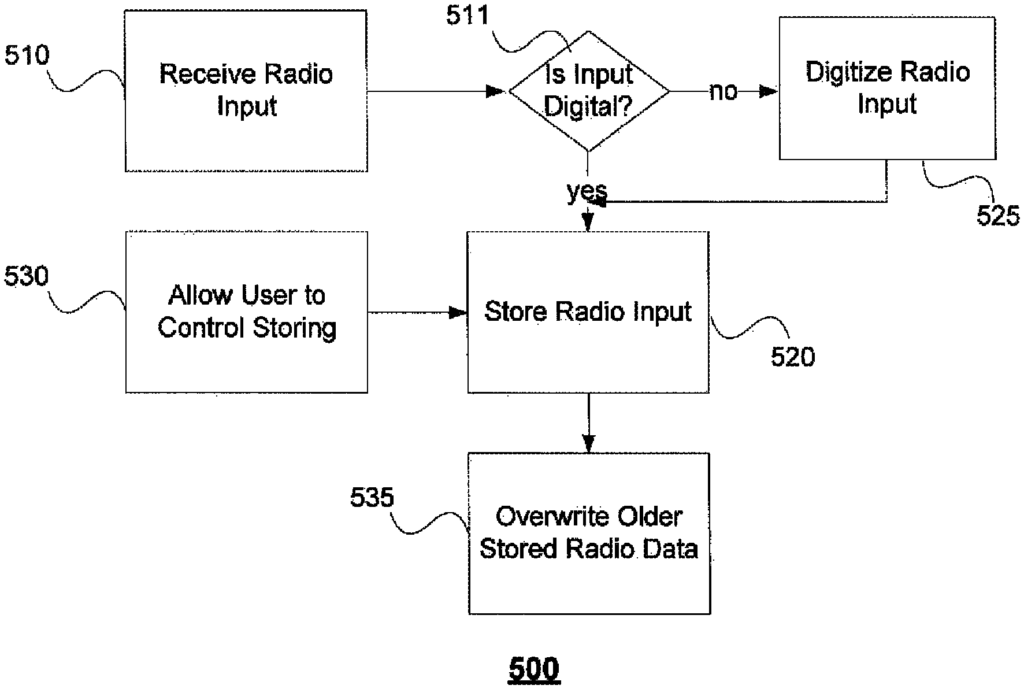
The 3D Radio LLC invention works as follows
A method, apparatus, system and media are used to control a multituner radio. The voice command can be filtered and/or received. The voice command can be used to modify the operation of the radio. Through a gesture pad, a user can receive a gesture input. The gesture input received can be used to modify another operation of the radio multi-tuner. With a gesture pad, a fingerprint can be recognized. The fingerprint recognition can be used to authenticate a user. The fingerprint can be used to personalize the operation. “User training can be provided for gesture input.
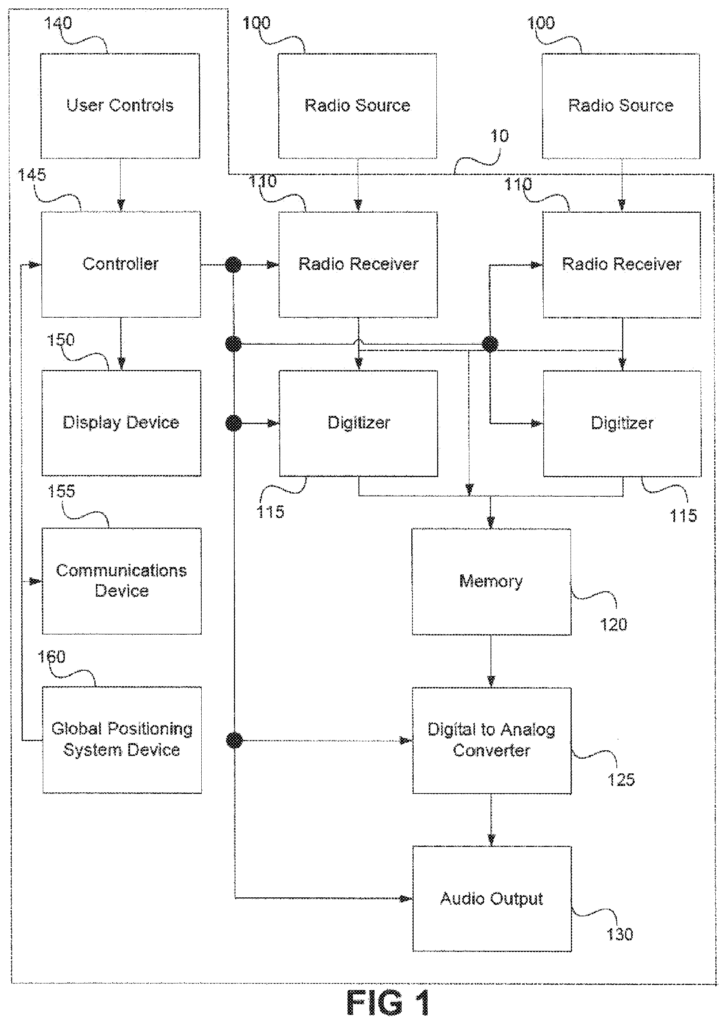
Background for Entertainment Systems and Methods
The present invention is directed at radio products and features such as those illustrated in U.S. Pat. No. No. 7,171,174, issued January 30, 2007 and U.S. Patent. No. No. 7,343,141 issued Mar. “11, 2008 and which is hereby explicitly included by reference in its entirety.
Radio is one of the most popular forms of entertainment today. Radio is used everywhere: at home, in cars, in offices, on the move. Today, there are many sources available. These include radio (AM andFM), the internet, and satellite. Radio functions have remained relatively constant over the years.
In recent years, new technologies have been developed. This includes less expensive tuners and memory, as well as better quality analog-to-digital conversion. These technologies allow for an improved radio system.
Recently, television systems have seen some improvements. TiVo and other personal video recorders allow users to record television programs easily. They also offer controls similar to VCRs. U.S. Pat. No. No. 6,259 441, (2001) Ahmad et. al., “Display Pause with Elastic Playback” U.S. Pat. No. No. U.S. Pat. No. Barton et al. received 6,233,389 in 2001 for a ‘Multimedia Time Warping System? These types of improvements are optimized to meet the needs of television viewers. This prior art, for example, focuses on the improvement of viewing specific television programs.
Radio listeners have different requirements than television viewers. Radio listening is often done in different, mobile environments. For instance, most television viewing takes place in a fixed home environment. Some people listen to radios in the shower. Radio is often heard in cars or on the person of people who are doing other things. The television viewer can sit through the entire program. Radio listeners are more likely to listen casually, while doing other things, and they may switch stations when hearing something short, like a song or commercial, traffic/weather reports, etc. Radio listeners rarely use program schedules, whereas television viewers do.
A system that enables a listener of radio to control audio content is needed. A listener might need to be able to quickly go back and hear something. It could be a repeat of a part of a weather or traffic report, a telephone number or another item in an ad, a favourite song or information about a contest.
A radio listener might also want to pause radio content when doing other things. A listener in a vehicle may want to pause the song to concentrate on traffic, or to talk to another person in the car. The listener can resume the song after resuming it. They may then wish to skip commercials in order to catch up with the live broadcast.
A radio listener might also want to be able to record radio content in progress to listen to later. A listener in a vehicle may be listening while the interview is still going on, but need to leave the car before it ends. U.S. Pat. No. Moe received 5,345,430 in 1994, “Recovery Recorder System, Particularly Commercial Radio/TV Broadcast Recovery Recorder System”. The invention discloses continuously recording the final few minutes of an monitored program to a short term memory and then transferring them, upon operator command, onto a long-term media. U.S. Pat. No. No. The invention discloses the detection of a desired programme and starting a recorder to record it. This prior art, however, requires the user to choose a specific program or radio station to record.
It is cheaper to store radio content in large quantities because digitized audio requires less memory. Radio tuners are also cheaper than television tuners, making it possible to monitor multiple radio stations simultaneously. A radio listener will be interested in multiple radio stations simultaneously, so a system that has multiple tuners with a large but inexpensive memory can also be very useful.
For instance, it is necessary to have a system that allows a user switch between their favorite radio stations, and then rewind back to the beginning of a piece of interesting content they may have missed, like a favorite song, or a traffic update. It would be helpful to have a system which allows users to identify content of interest and then informs them when that item is broadcast on another radio station. The user can then switch to that station to rewind to the beginning of that item. A system would be useful that allowed a user identify desired content and save a copy as it was broadcast. It is also necessary to have a system that allows different preferences for radio listeners in one radio.
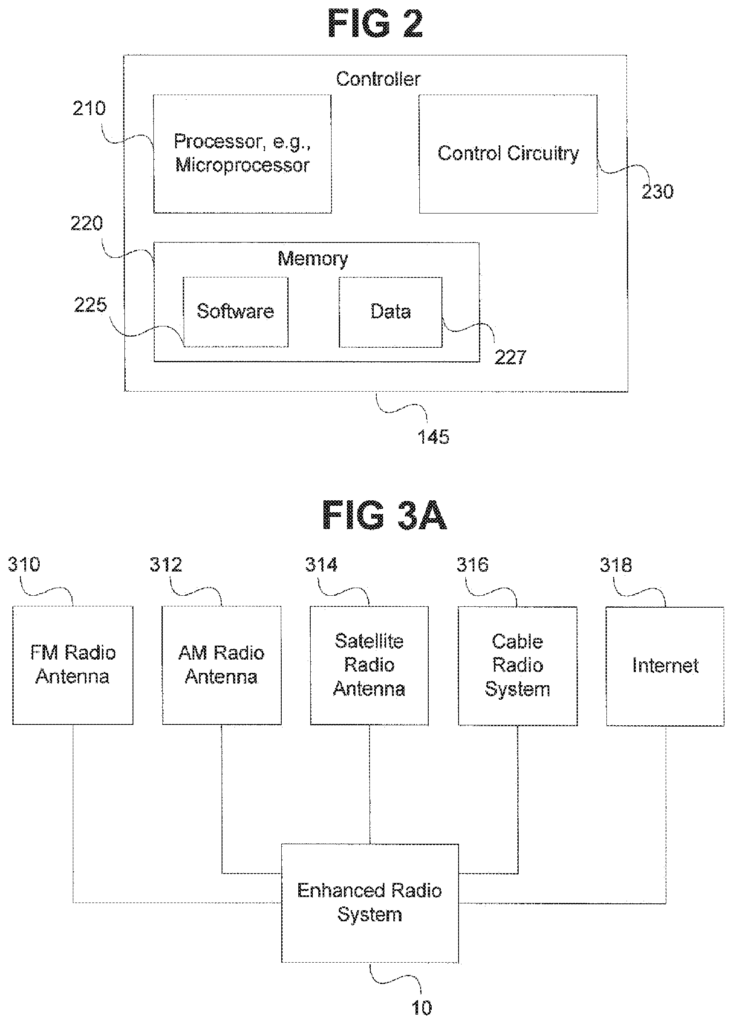
The user wants to listen to content broadcasted before the radio turned on. This is because they often turn on the radio (or switch to it from another source, such as their CD player), during unwanted content, such as commercial breaks, or just after a song that is desired.
The user might want to use a radio with a karaoke function, since radio listeners often sing along in places such as the bathroom or car.
A system must also be developed to recommend radio stations to an individual user. It would be especially useful for users who are traveling or new to a particular area. A radio listener could use such a system to search through a database and find radio stations that match his preferences. A driver on a trip might need a system which automatically monitors radio stations available and compares their content to his preferences. “A user of a car radio also needs a system which provides different sets and preferences of favorite stations when traveling in various locations.
Traveling listeners might also require a system that informs them about venues and events within an unfamiliar area. A listener might be interested in learning about concerts, celebrity events, radio station activities, concert venues, or music stores.
Radio listeners listen to radio in different environments. They listen in different rooms in the house, the car, the office and with a portable device. They need a system to allow them to access advanced radio features from all these different environments. They need to be able to transfer information from one environment to the next, including radio presets and favourite songs. They need to be able to upgrade the functionality of their radio without purchasing a new one. They need a system to download favorite songs onto a radio.
Radio listeners need an Internet environment for their enhanced radio listening. This could include learning about music, buying music-related products, or finding out more about radio stations. The system should allow them to manage information such as their favorite radio stations, artists and songs.
A radio audience may need a way to respond more easily to radio content. Listeners may want to enter a contest, respond to an advertisement, listen to a talk show or request a song. “The user may require a system which allows the telephone to be used in conjunction with the radio system.
A radio-listener needs to be able to communicate more easily with other radio-listeners. The listener might want to share information they heard on the radio with another person. This information can include an invitation or information about a concert, other event, or a link to radio station or radio program, a song or other radio related information.
Radio service providers could also benefit from the invention. Radio service providers require a system to track the demographics of their listeners, such as which advertisements they like, which artists are their favorites, etc. as well as any enhanced radio features that their users can access.
This enhanced radio system (ERS) provides these and other benefits. This invention has a main feature of simultaneously storing content from multiple radios. This invention also allows the receivers to tune to radio stations according to stations that the listener has selected as their favorites, according to stations they have recently played, or based upon scanning for new stations. A listener can select quickly from stored content on any receiver. Another aspect of this invention is the ability for a user to pause, resume or skip forward or backward in time, within any stored content. This includes allowing users to listen to radio content before switching stations. This invention also allows a listener the ability to download audio content or record radio content and then quickly access it at a later time. Another aspect of the invention is the karaoke function, which removes vocal tracks from broadcast songs and displays the lyrics.

Other aspects of the invention relate to the collection of preferences of users. Listeners may be permitted to rate certain content or content groups. The system can recognize and alert the listener when preferred content is broadcasted on a station the listener does not currently listen to. When a user listens to a radio station, the system can automatically skip over content that is disliked. The system can recommend radio stations to an listener. The system can recommend local events to a listener.
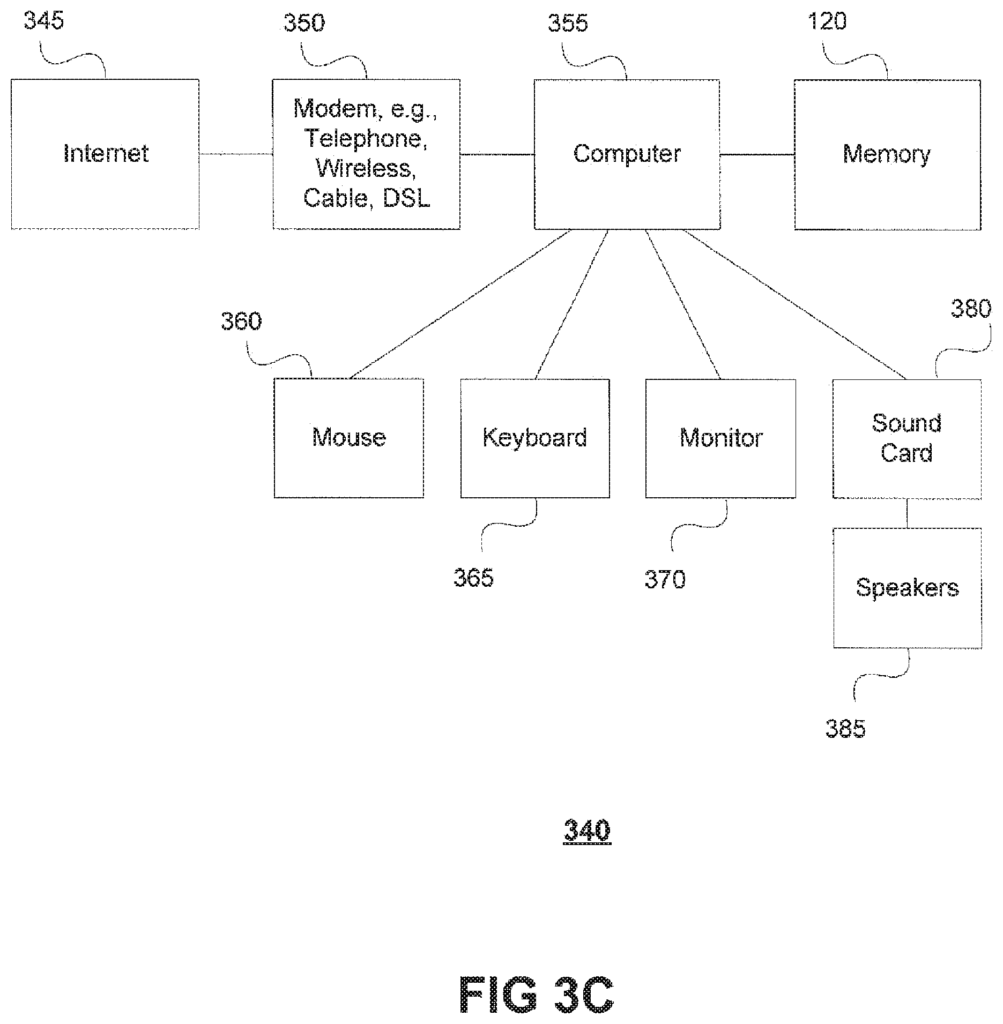
Click here to view the patent on Google Patents.
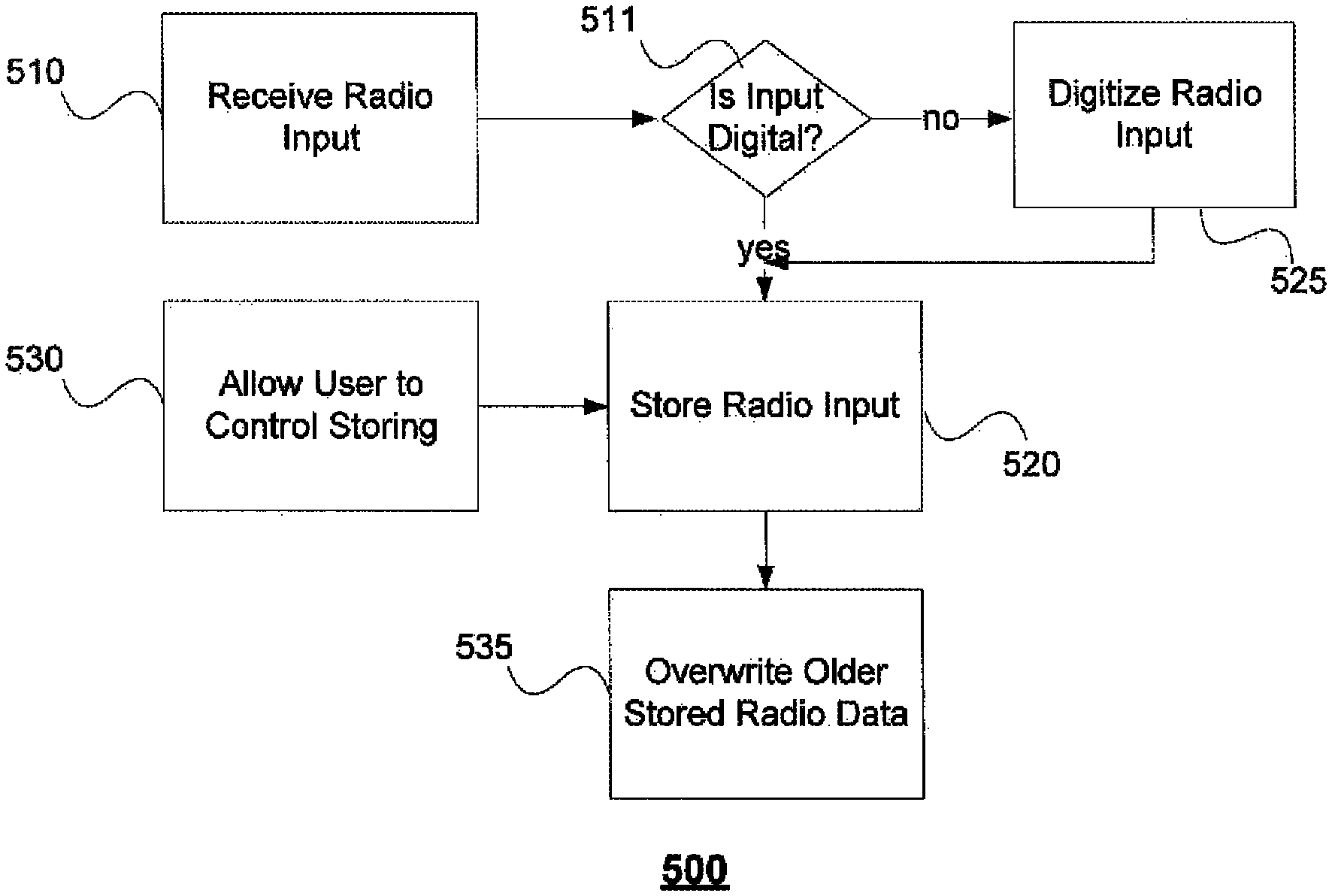
Leave a Reply